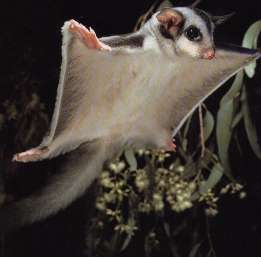Homologous traits are those that are shared between two different species that have a common ancestor that possessed those traits and then passed it on to the next generations. Two different species that share a homologous trait are the beaver and the elephant.
Elephants are the largest land dwelling mammal on Earth! Like the beaver, elephants are also herbivores. They like to eat grasses, bamboos, leaves, bark roots, bananas and sugarcane; eating about 300-400 pounds a day.
One homologous trait that both the beaver and the elephant share is that they both have incisor teeth that have been adapted to for different roles. For example, the beaver uses its strong, chomping, incisor teeth to fell and gnaw through trees. With their powerful jaws and strong teeth they create dams, massive log, branch and mud structures. Elephants, on the other hand, use their elongated incisors, called tusks, for larger tasks which include: digging, stripping bark, moving obstacles out of the way, defense, and even attracting mates.

With close examination, both are a modification of the basic incisor. With time, evolution adapted these animals' incisors to perform different functions. These homologous traits were inherited from a common ancestor who, most likely, had incisor teeth. I think the Moeritherium was that common ancestor. Its teeth suggest that it was a herbivore that ate freshwater plant and dwelled in swamps and rivers. Fossils showed the beginnings of the enlarged incisors (tusks) but no signs of trunks.
Analogous traits are not the result of a common genetic history, but are due to a common environmental pressure that caused both species to develop a similar adaptation to that stress. Two different species that share an analogous trait are the flying squirrel and the sugar glider.
 |
 The sugar glider, found in Australia, is much like the flying squirrels. They have almost the same color fur as well as the fact that they are tree dwelling as well. They are active in the night while they hunt for insects and small vertebrates. Sugar gliders are also named for their sweet tooth and their ability to glide through the air like flying squirrels.
The sugar glider, found in Australia, is much like the flying squirrels. They have almost the same color fur as well as the fact that they are tree dwelling as well. They are active in the night while they hunt for insects and small vertebrates. Sugar gliders are also named for their sweet tooth and their ability to glide through the air like flying squirrels.One analogous trait that the flying squirrel and the sugar glider share are their unique ability to glide to treetop to treetop as well as their similar look. However these creatures do have differences; they are found on opposite of the world, sugar gliders is a marsupial and carries its babies in a pouch, whereas the flying squirrel has larger babies and is from the placentals. By studying there genes and other traits, scientists have come to the conclusion that they are probably not that closely related and they have similar features, such as the patagium due to there environmental stresses of getting from one treetop to another.


Hey Ashley,
ReplyDeleteOk first of all, the picture of the flying squirrel is probably the greatest thing ever! You picked such an eclectic array of animals to talk about. I love your diverse choices. It was very interesting to see the ancestor of the elephant and the how it evolved over time. It kind of reminded me of a fat anteater, with a short nose. Overall it is very well written and insightful. Thanks for your post.
-Tyler
Very well done. Good background and excellent description of both sets of traits.
ReplyDeleteJust for clarification, regarding the analogous traits, did the common ancestor between the flying squirrel and the sugar glider also possess the ability and anatomy to glide from tree to tree?
From what I read, no they didn't always have the ability nor the anatomy to glide from tree to tree. Before, they were able to walk from treetop to treetop because of the density of the canopies. However, when the density decreased,they adapted the membranes in order to travel.
ReplyDeleteI enjoyed this post. Very interesting how a beaver and an elephant are so vastly different yet they are subtlety related. Or how two rodents who evolved distant from each other could develop the same trait in different processes. Good post. :)
ReplyDeleteGood answer. Thank you for the response, Ashley.
ReplyDelete